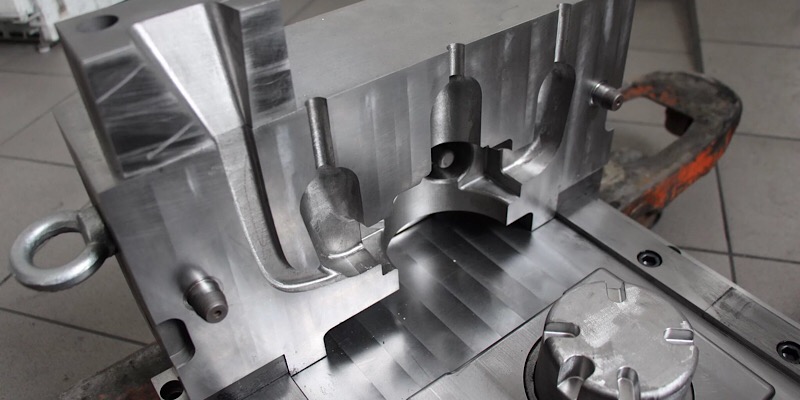Lastest Updated On April 28th, 2022
There are many methods used for centuries for casting metals. Some of these methods date back over 5000 years. One of the most modern and effective methods is die casting.
Die casting is a metal casting method that involves pouring molten metal into a mold cavity so that it solidifies to take up the shape of the mold. This technique of metal forming allows versatility in part size and shape, even for complex shapes with internal cavities or hollow sections.
Casting is not specific to metals, it can also be used for non-metallic materials such as glass, ceramics, and plastic. Most metal diecasts are made using non-ferrous metals such as zinc, aluminum, copper, magnesium, and lead. This article discusses the details and advantages of aluminum die-casting to help you choose the best material for producing desired aluminum parts.
Aluminum die casting is one of the most widely used methods with use in every major industry for making aerospace and aircraft components, electronic components and vehicle components, etc. Let’s learn more about how aluminum die casting works.
What Is Aluminum Die Casting?
Aluminum Die Casting is a method for creating aluminum parts that are well textured or smooth, and have a good surface finishing, and high dimensional stability. The reasons why aluminum is used for metal casting are as follows:
It is lightweight and very stable for complex shapes and thin walls.
It has high thermal and electrical conductivity.
It has good corrosion resistance.
It retains its strength at very high temperatures.
Of the two basic types of die casting equipment and machines; the hot chamber die casting machines and cold chamber die-casting machines, aluminum castings are processed in cold chamber machines. Because of the retention of the strength of aluminum alloy even at very elevated temperatures, it requires high pressure.
Therefore, the cast metal is melted in a separate furnace before being fed to the cold chamber machine. The machine then forces the molten metal into the mold using a pressurized plunger.
How Does Aluminum Die Casting Works?
Like any typical die casting process, aluminum die casting also involves the pouring of liquid aluminum into a mold called dies and allowing it to solidify into the desired shape. The die casting dies are made of at least two halves to permit the removal of castings. The shape of the dies influences the very complex shapes and intricate features in the casting. This is more or less the crux of any casting technique.
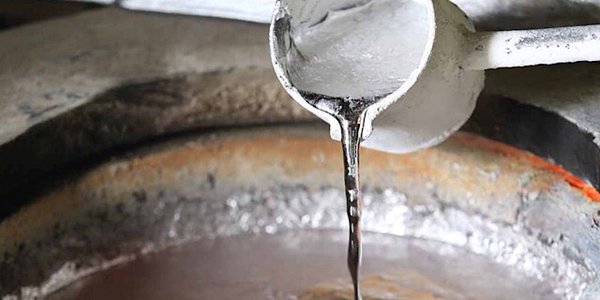
The aluminum die casting process can be broken down into the following 9 steps:
1. Ingots of aluminum alloys are exposed to high temperatures until they melt;
2. The two die halves are cleaned and lubricated before clamping them together;
3. The mold for the cast is prepared using two steel dies machined into the desired shape and clamped together by a die casting press;
4. The molten aluminum is then injected into the cavity at high pressures, allowing it to solidify;
5. The process of transferring the molten metal into a chamber before injection depends upon whether a cold chamber or hot chamber die casting machine is used;
6. The cold chamber die casting machines are used for casting alloys with high melting points such as aluminum, magnesium, etc. Therefore, aluminum die casting is done using a cold chamber machine in which the molten metal is ladled into the casting instead of being pumped by hydraulic cylinders;
7. The hot casting is allowed to cool down and solidify. The molten metal fills the die cavity to take up the desired shape of the die design;
8. The two die halves are separated and the casting is ejected;
9. Finally, the excess material attached to the aluminum casting is trimmed via secondary operations such as sawing, cutting, etc.
Aluminum casting is one of the fastest and most precise high-pressure die casting processes. The recovered aluminum die is well-textured, has high hardness, good corrosion resistance, and requires minimal surface finishing. The steel dies are reusable unlike the sand cast molds and therefore, aluminum die casting is the most feasible method for high volume production of aluminum parts.
Aluminum Alloy Material For Die Casting parts
The most commonly used alloys for aluminum die casting are A360, A380, A383, and A413. Each has its own advantages and therefore the choice of the alloy depends upon the design requirements. Some of the properties of these alloys are summarized in the chart below.
Aluminum Die Casting Material | A360 | A380 | A383 | A413 |
Hardness | 75 | 80 | 75 | 80 |
Elongation (% in 2 in.) | 2.5 | 3.5 | 3.5 | 2.5 |
Shear Strength | 28 | 28 | – | 25 |
Tensile Yield Strength (ksi) | 25 | 23 | 22 | 21 |
Ultimate Tensile Strength (ksi) | 44 | 46 | 45 | 43 |
Thermal Conductivity | 65 | 56 | 56 | 70 |
Electrical Conductivity (% Cu) | 30 | 27 | 23 | 31 |
Density (lbs/in3) | 0.095 | 0.099 | 0.099 | 0.096 |
Does Aluminum Die Casting Require Post Finishing?
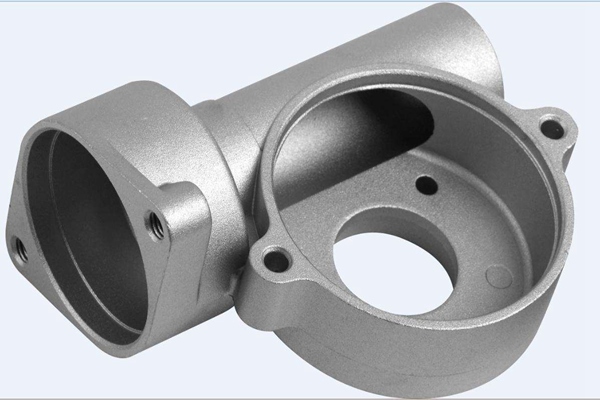
Once a cast is removed from the mold, it still requires finishing to enhance the aesthetics and functional properties of the part. These finishing touches may add shine to the component, cause high corrosion resistance, add resistance to wear or protect from environmental exposure.
However, an aluminum die requires minimal or no finishing at all because it already has a very good surface finish by casting standards. The minor imperfections on the surface can easily be addressed by sanding which involves using an abrasive material such as sand to smoothen the surface.
Other finishing processes such as shot peening and powder coating can also be done on the metal part to improve resistance to wear and add protective coating respectively.
Advantages Of Aluminum Die Casting Parts
Aluminum casting is one of the most preferred casting processes across the globe. It is the best economical alternative to other processes. Some of the major reasons why aluminum die casting parts are exceptionally good are as follows:
-Aluminum being a lightweight alloy allows making lightweight parts without compromising their strength
-It has the versatility to produce thin-walled simple or complex-shaped parts with good precision
-Aluminum cast parts are well textured or smooth depending on the requirements
-Since the process is very fast, it allows producing tens of thousands of parts in less time and cost
-This mass production is very cost-effective in contrast to other die casting processes
-The parts are highly corrosion resistant and are excellent conductors of heat and electricity
Aluminum Die Casting VS Sand Casting VS Vacuum Die Casting
Deciding which casting method to use depends upon the design characteristics that are required for a specific part. There are different types of casting methods each with its own unique injection systems benefits such as aluminum die casting, sand casting, and vacuum die casting.
Aluminum Die Casting
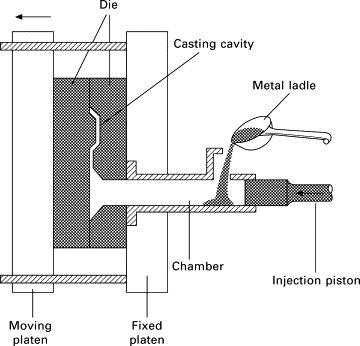
Aluminum die casting involves the high-speed injection of aluminum in the mold cavity at high pressure. The whole process is very efficient and fast making it ideal for high volume production. The casting has a good surface finish and requires minimal finishing. Because of its lightweight, aluminum is widely preferred for making thin-walled parts without compromising their strength.
Aluminum has a high melting point, it is processed in a cold chamber die casting machine. However, due to high-pressure injection, the casting may be subjected to trapping of gas which causes porosity.
Sand Casting
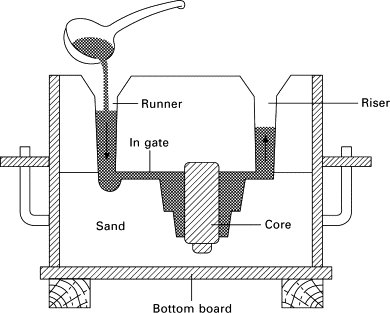
Sand casting involves the pouring of molten metal into sand molds without any application of pressure. It is the oldest and most commonly used low-cost casting method for making blanks or complex parts such as automotive engine blocks, crankshafts, and cylinder heads. Since the sand mold is blasted away in order to extract the casting part, it is a very slow process and is not preferable for bulk production.
Vacuum Die Casting
Vacuum die casting is an advanced casting method that involves the use of a vacuum to draw the liquid into the mold. It allows avoiding the trapping of air in the cavity and removing dissolved gasses that cause porosity on the surface of the part.
Vacuum die casting allows the casting of thin sections with a good surface finishing, which improves the mechanical properties of the casting and reduces the need for additional machining for finishing. However, the sealing structure of the mold is complex and the cost of the whole process is high.
Design Tips for Die Casting Aluminum Parts
For achieving the best results of aluminum die casting parts, one must consider some important factors.
Material Selection
As discussed above, there are different alloys of aluminum commercially available. Based on your design requirements, you can choose from the alloys while considering properties such as hardness, strength, conductivity, melting point, fluidity and pressure tightness, etc. One should be very careful with their choice of material in order to achieve the desired characteristics in their metal parts.
Machining Allowance
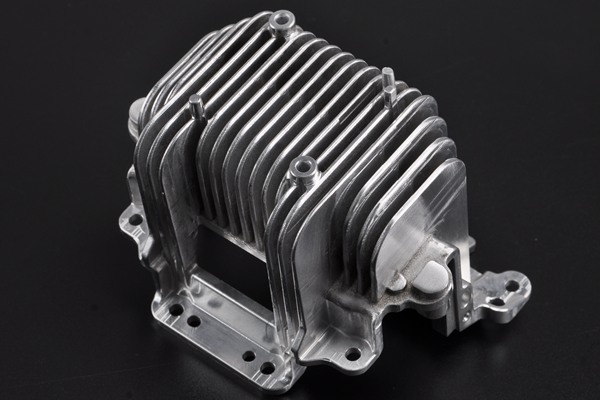
To ensure the casting retains its properties and has uniform density, one must keep an adequate machining allowance. Machining allowance is the removable stock from a finished cast part. An allowance too small causes defects on the surface of the metal parts while an allowance too large increases the lead time of the process. Therefore, a balanced allowance is important for optimum results.
Shrinkage During Design
Shrinkage is an important design consideration in any manufacturing process. Every material including metal shrinks during cooking or solidification. Since thicker areas tend to shrink more than thinner areas, one can consider making thinner sections a part of their design in order to avoid porous and uneven surfaces.
Wall Thickness
Achieving uniform thickness of the aluminum cast components is very tricky. Thin-walled casts are very much in demand because they have lower material costs and make the part lightweight. However, a slight imbalance in the uniformity of the thickness of thin-walled parts may affect the strength of the component.
Part Strength
As discussed previously, different alloys of aluminum lie on a distinct spectrum of strength. Therefore, the alloys must be selected carefully for the required part strength. Another factor that impacts the part strength is die-casting technique. Generally, vacuum die casting is an excellent option for improving part strength and minimizing surface porosity.
Assembly Process
It is important to plan the assembly of the parts correctly in order to avoid any shortcomings in the design of the cast. Because the assembly of simple designs is different from complex designs, it is better if the required assembly process is correctly identified and planned.
Design Appearance
Based on the requirements of the appearance of a cast component, if the aesthetics of the component matter, one can perform finishing processes such as electroplating, shot peening, or sandblasting. These techniques enhance the look of the component without compromising its durability and characteristics.
Conclusion
Aluminum die casting is a very feasible, cost-effective, and highly precise method of casting for the bulk production of complex parts. The choice of material and the method of casting depends upon the desired design characteristics. Therefore, one must consider all aspects and plan effectively to achieve optimum results.
WayKen provides die casting services for each customer to deal with aluminum die casting problems. If you have any metal parts (eg, aluminum components) or product projects, please feel free to contact us with our experienced team.
FAQ
Here are answers to some of your most frequently asked questions regarding aluminum die casting.
1. Is aluminum good for die casting?
Yes, aluminum has high electrical and thermal conductivity and is resistant to corrosion. Its low density and good mechanical and thermal properties make it a good alloy for die casting.
2. How strong is die-cast aluminum?
A die-cast aluminum, though not as strong as a steel cast, is very strong and durable compared to a sand cast and magnesium or zinc cast.
3. Can steel be die-cast?
Yes. However, it is a ferrous metal and contains iron due to which it is not resistant to corrosion and therefore is not preferred.

